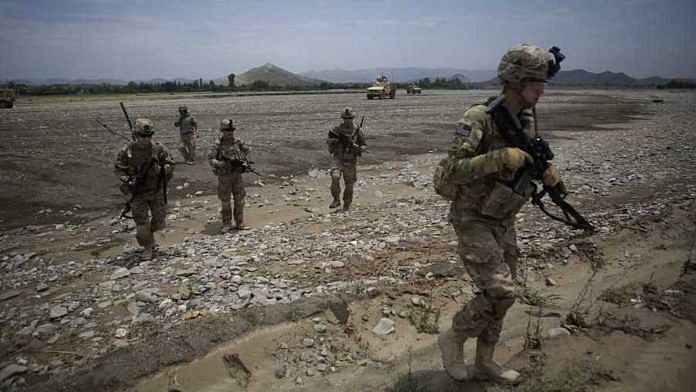President Donald Trump is aiming to bring home thousands of U.S. troops from Iraq and Afghanistan ahead of the November elections, to show he’s fulfilling his pledge to end America’s wars in the Islamic world. In fact, the best way to minimize the chances of getting dragged back into such conflicts is to leave some troops in place but to clarify and rationalize their mission.
The truth is that the “endless wars” Trump constantly decries have, for all practical purposes, already ended. The U.S. military footprint in both Iraq and Afghanistan has shrunk radically — down from 170,000 troops at the peak in Iraq to 5,200 now; and to 8,600, down from 100,000, in Afghanistan.
Along with troops from NATO and other partner countries, those residual forces are performing critical missions at minimal cost. In Afghanistan, they train and support beleaguered Afghan troops, while gathering intelligence and conducting targeted counterterrorism missions. They also provide key leverage to the Kabul government, which has recently begun peace talks with the Taliban.
In Iraq, working closely with effective local units, U.S. troops keep the threat of a resurgent Islamic State in check. The well-developed partnership insulates Iraqi commandos from the sectarianism that pervades much of the country’s politics and helps limit the spread of Iranian influence within their ranks. A continued U.S. presence also bolsters reform-minded Iraqi Prime Minister Mustafa Al-Kadhimi, who lacks a political power base of his own.
A partial withdrawal shouldn’t entirely jeopardize those missions. (The Pentagon is looking at coming down to roughly 3,000 troops in Iraq and 4,500 in Afghanistan.) Contractors and other resources could fill some gaps. It’s welcome to hear Secretary of State Mike Pompeo say a full withdrawal in Afghanistan remains contingent on the Taliban cutting all ties to terrorist groups. And the U.S. is sending 100 more soldiers to Syria after a clash with Russian forces there.
Nevertheless, Trump would clearly prefer to get troop levels to zero. That’s the wrong goal. The U.S. still has important interests in the region, including preventing terrorist attacks, keeping oil supplies flowing and limiting Iran’s sway beyond its borders. Pulling out without a plan for safeguarding those interests would only ensure the U.S. is forced to return when conditions deteriorate and threats re-emerge.
A small number of American troops, working with international partners and local forces as well as U.S. airpower and drones — much as they did in the successful campaign to roll back Islamic State — could dramatically reduce that risk. To make their continued presence sustainable, U.S. policy makers and military commanders need to be more transparent with the American public about how many troops are being deployed, what they’re expected to do and why. Congress should repeal the overly vague war authorizations that continue to govern fighting in Iraq, Afghanistan and elsewhere, and enact narrower measures that are limited in time and geography. Future presidents should regularly be forced to account for the effectiveness of even reduced troop deployments.
The U.S. also needs to wield diplomatic and financial tools more ably, rather than asking the Pentagon to solve problems no number of troops can fix. The Afghan government and military, for instance, will require U.S. aid as much if not more as American troops are drawn down, in part to encourage other donors to keep giving as well. Restoring the requirements placed on Iran by the 2015 nuclear deal and negotiating a broader agreement to end its destabilizing regional activities would be less costly than trying to beat back its militant proxies everywhere.
What will prevent future forever wars is greater stability in the region. There’s a better chance of achieving it with U.S. troops on the ground than without them. – Bloomberg
Also read: Why Trump’s troop reduction in Iraq is good for Iran, Russia and Syria






